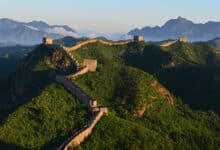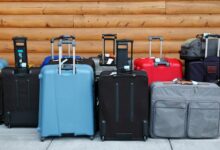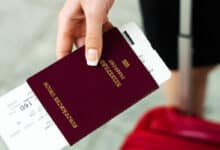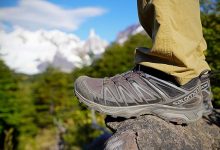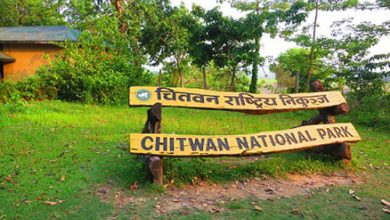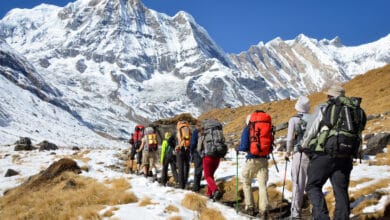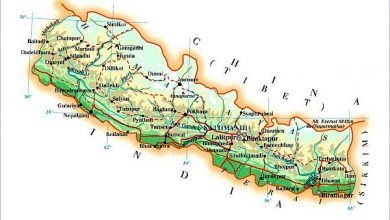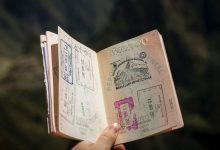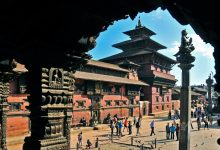Nepal Trekking Permits & Fees
Trekking permit is not issued beyond visa expiration date. Hence, trekkers must have valid visa for sufficient number of days covering their trekking schedule.

If you’re headed to Nepal, there’s a big chance you’re going to do some trekking. Before you head out to the mountains, though, you need to make sure you’re properly prepared.
One of the things you need is a TIMS (Trekkers’ Information Management Systems) card. A TIMS card is a basic trekking permit you need for all treks in Nepal.
Trekkers in Nepal are allowed to trek as FIT (Free Individual Trekker) or in a group of various sizes. However, there are certain trekking regions. Which are known as ‘Restricted Areas’ that are highly regulated by the Government of Nepal and hence FITs are strictly forbidden.
Types of Trekking Permits
Trekking permits are required for all trekking regions of Nepal. The trekking permits are issued by the government of Nepal and the authorized associated bodies which are regulated and monitored by the government. The type of permits required will differ as per the trekking area you are intending to tread. Please ensure you have all the required permits before leaving for the trek.
National Park Permit/Conservation Area Project Permit
Most of the trekking regions in Nepal fall under either national park or conservation area so it is likely that you will need either of this permit for most trekking trails in Nepal. Free individual trekkers are allowed to trek in the National park or conservation area.
There are many different National parks in Nepal, a variety of conservation areas and other places requiring trekking permits and documentation for trekkers to access. Bonus Article: Entry Fees for National Parks and Conservation Areas.
To obtain national park/conservation area permit you will need to fill a form and submit it with your passport copy and passport size photo affixed at the Nepal Tourism Board Office. The tourism board offices are located in Kathmandu and Pokhara. The permits are issued by the Nepal tourism board. Everest, Annapurna, Langtang, Manaslu, Mustang, Rolwaling are some of the notable regions where you will need this permit.
Trekkers Information Management System (TIMS)
Trekkers Information Management system (TIMS) is a popular term in the tourism industry of Nepal. It is a system developed to manage the information regarding foreign visitors and trekkers in Nepal.
This system whole purpose is for the safety and security of every traveler and trekkers. The card contains general questions regarding travel destination and some personal information. For instance, like trekking area, a number of days of travel, itinerary, handling agencies and other common personal information of trekker.
All the data are kept in the system whose access is only available to tourism board and government agencies.
Special Permits / Restricted Area
Controlled/Restricted area are the areas which are highly regulated by the government of Nepal due to close international borders in proximity. Trekking in these regions is allowed only upon obtaining special permission/permit from the Department of Immigration, Nepal.
Places like Mustang, Dolpo, Kanchenjunga, Manaslu are among the restricted areas of Nepal. To obtain the permit, you will need to have at least 2 participants, accompanied by a licensed trekking guide and need to go through a registered trekking company in Nepal. Free individual trekkers (FIT) are not allowed to trek in these regions.
Rural Municipality Fees
This is the newest permit introduced in Nepal trekking sector and this permit is issued by the rural municipality of the designated areas. As of now, this permit is being issued in the Everest and Makalu region. You can get this permit from the starting point of your trek.
Trekking Permit Fee Details
| S.No. | Regions/VDCs | Permit Fee |
|---|---|---|
| 1. | Upper Mustang
|
USD 500 per person (for the first 10 days)
USD 50 per person /Day (beyond 10 days) |
| 2. | Upper Dolpa
|
USD 500 per person (for the first 10 days)
USD 50 per person /Day (beyond 10 days) |
| 3. | Gorkha Manaslu Area
|
September – November
USD 100 per person / week USD 15 per person / day (beyond 1 week) December – August USD 75 per person / week USD 10 per person / day (beyond 1 week) |
| 4. | Humla
|
USD 50 per person / week
USD 10 per person / day (beyond 1 week) |
| 5. | Taplejung
|
USD 20 per person/ week (for the first 4 weeks)
USD 25 per person /week ( beyond 4 weeks) |
| 6. | Lower Dolpa Area
|
USD 20 per person/ week
USD 5 per person /week ( beyond 1 week) |
| 7. | Dolakha
|
USD 20 per person/ week |
| 8. | Gorkha Tsum Valley Area
Sirdibas-Lokpa-Chumling-Chekampar-Nile-Chule
|
September – November
USD 40 per person / week USD 7 per person / day (beyond 1 week) December – August USD 30 per person / week USD 7 per person / day (beyond 1 week) |
| 9. | Sankhuwasabha
|
USD 20 per person/ week (for the first 4 weeks)
USD 25 per person /week ( beyond 4 weeks) |
| 10. | Solukhumbu
|
USD 20 per person/ week (for the first 4 weeks)
USD 25 per person /week ( beyond 4 weeks) |
| 11. | Rasuwa
|
USD 20 per person /week |
| 12. | Manang
|
September – November
USD 100 per person / week USD 15 per person / day (beyond 1 week) December – August USD 75 per person / week USD 15 per person / day (beyond 1 week) |
| 13. | Bajhang
|
USD 90 per person / week for the first week
USD 15 per person / day (beyond 1 week) |
| 14. | Mugu
|
USD 100 per person / week
USD 15 per person / day (beyond 1 week) |
| 15. | Darchula
|
USD 90 per person / week
USD 15 per person / day (beyond 1 week) |
Conditions to be followed by Trekkers
- Trekkers should respect local customs and traditions and must not indulge in any activity that goes against the established norms and culture of the society.
- Individual trekking in restricted areas is strictly forbidden. There should be minimum two trekkers.
- Daily remuneration, safety gears and appropriate clothes, Personal Accident insurance must be provided to Nepali citizen accompanying travel group as guide/porter/any other supporting roles.
- Trekkers should trek only in the specified or designated route as per the Trekking Permit. They are not allowed to change route. Or concerned trekking agency/trekking guide accompanying the group must not let trekkers change the route.
- Trekkers should comply with instructions given by authorized Officials in trekking zone (Restricted Area).
- Mountaineers with expedition permit should get trekking permit as well if they have to pass through Restricted Areas to climb peaks. In this case, they do not need to pay fees for (Trekking) Permit.
How to Get Trekking Permit
To obtain national park/conservation area permit you will need to fill a form and submit it with your passport copy and passport size photo affixed at the Nepal Tourism Board Office. The tourism board offices are located in Kathmandu and Pokhara. The permits are issued by the Nepal tourism board. or For trekkers accompanied by a guide and going through the registered company, your Nepal trekking permits and fees will be all handled and arranged by the respective company.


